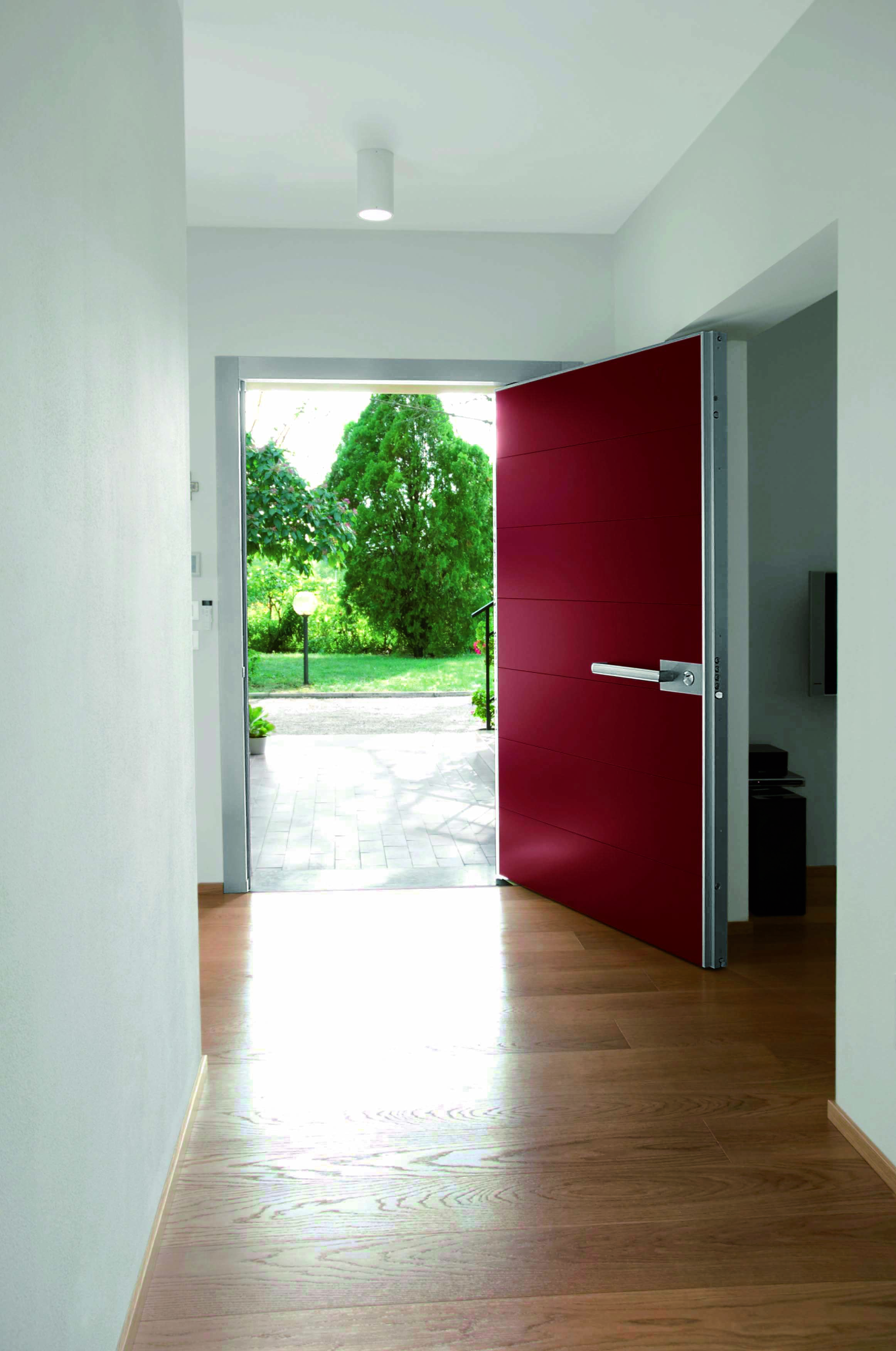Is your exterior door welcoming drafts right into your home? Does your entryway say goodbye to heated or cooled air as the door ushers them out through gaps or failed seals? Doors can be a significant source of air leakage and energy waste, so maybe it’s time for you to upgrade. Franklin Window & Door can provide clear education on a variety of solutions and help you achieve better energy efficiency with exterior doors from innovative manufactures.
Why Energy Efficient Entry Doors Are Important
If you have an eighth of an inch gap at the bottom of your door, it lets in as much cold air as a 2.4 inch hole in your wall! That’s incredible! An eighth of an inch seems miniscule, but during our cold Midwest winters, that’s a whole lot of drafts coming in and making themselves comfortable.
You wouldn’t punch a 2.4 inch hole in your wall, but your entry door could be doing the equivalent through air leakage. And, of course, it is just as costly in the summer when you have your AC going.
To tackle the issue and boost efficiency, look at:
Materials
You cannot beat fiberglass for energy efficiency — though steel comes in a close second, depending on the manufacturer. Fiberglass entry doors have an R-value of 5 - 6, and if you have an efficient foam core, you can boost that to between 6 - 10.
Steel typically has an R-value of 5 - 6. Wood, on the other hand, has an R-value of just 2.
What about clad wood? It offers more insulating value than wood, but not as much as fiberglass or steel.
Manufacturers
When you buy a basic off-the-shelf door, you will not receive the level of energy efficiency you want. Look for manufacturers that integrate advanced technology and materials into their exterior doors. Marvin, Provia, Therma-Tru, and other leading companies deliver innovation — and results.
Key Metrics

Some other factors to look for:
Solar Heat Gain Coefficient (SHGC).
SHGC tells you how well the door keeps solar heat out, with a range of 0 to 1. Because we live in an area with cold winters, look for a lower SHGC to allow moresolar heat in.
U-Factor.
U-factor is a measurement of heat transfer, as opposed to R-value, which measures resistance to heat transfer. So, while you want a door with a higher R-value,look for a lower U-factor. The lower it is, the better it keeps heat in your home. The U-factor range is 0.00 - 2.00; aim for 0.20 or lower.
Provia’s Embarq exterior door wins the award for energy efficiency. It is rated as the most efficient entry door system in the US, offering a U-factor of 0.09 — the lowest recorded R-factor for entry doors.
Air Leakage:
This tells you how much air enters a room through the door. As you’d guess, you want a low number, so you experience fewer drafts. The range is 0.1 - 0.3.
You can find this information on the ENERGY STAR label, if your door is certified, and on the National Fenestration Rating Council (NFRC) label. You can also find this information when you speak to the entry door experts at Franklin!
If energy efficiency is a high priority for your home, look for other value-added features. For example, if you opt for a fiberglass door, make sure it has a polyurethane core, high-performance trim, weather-stripping, and advanced glazing systems to keep the heat out in the summer and the cold out in the winter.
Choosing an energy efficient entry door is a great way to keep your home comfortable and your utility bills in check. We are happy to help you explore your options and find the best door to give you peace of mind. Contact us today for a
free in-home consultation and a hassle-free experience.



No Comments Yet
Let us know what you think